Luxembourg
From 1 January 2023, Luxembourg will reduce the standard rate of VAT (which applies to most goods and services supplied in the country) from 17% to 16%
At the same time, the lower VAT rates (which applies to a limited amount of goods and services including printed materials, gas and electric) will also reduce from 14% and 8% to 13% and 7% respectively.
This VAT rate reduction is being introduced due to high rates of inflation in the country.
Portugal
The Portuguese tax authorities have confirmed that from 1 January 2023, non-resident businesses VAT registered in the country will be required to:
- Produce invoices via certified invoicing software that can allocate a unique ATCUD code – This is a unique eight-digit code that is allocated by the Portuguese tax authorities prior to them being issued.
- Include a QR code on their paper or PDF invoices – This is a unique two-dimensional bar code.
- Report invoices monthly via a SAF-T Billing file – This contains full details of the invoice and will either have to be submitted manually via an interface or a webservice, or automatically via the electronic invoicing software provider.
It’s hoped that the introduction of these requirements on non-resident companies will help to monitor VAT invoices and prevent fraud.
Spain
Spain allows for VAT deduction of amounts paid to the tax authorities on invoices issued that were finally unpaid by the corresponding client. The conditions to deduct these amounts will be simplified starting 2023.
Spanish draft State’s Budget Law for 2023 includes a change on the bad debt relief rules making them more flexible from the supplier’s perspective.
Several modifications are introduced on the Spanish bad debt relief rules:
- In case of bankruptcy declared in a different Member State, it is possible to deduct VAT on unpaid invoices issued to that client in that other Member State.
- Where the customer is a private individual, the budget reduces the minimum amount to EUR 50 per transaction for claiming VAT on the bad debt.
- Also, there will be more flexibility on the requirements for proving that the debt was requested to the customer. Where currently it is required a Court or Notary requirement, the proposed text indicates that it will be allowed to claim the debt by any reliable means of contact.
- Finally, the deadline to recuperate the VAT credit is extended to 6 months since the bad debt is officially declared.
Sweden
Sweden published a compilation of invoice requirements and clarifications for issuing a complete VAT invoice, covering the required details of the seller’s and buyer’s name and address in a VAT invoice and other information and specific circumstances.
Regarding the seller’s and buyer’s name, the purpose of a complete VAT invoice containing information about the seller’s and buyer’s name and address is that the parties involved in a transaction can be identified. In this respect, who must report and pay the output VAT must be clear, and who may be entitled to a deduction for input VAT.
- Abbreviations and codes: according to the Swedish Tax Agency’s opinion, this means that, as a general rule, the name information must be complete and stated in plain text so that one can directly deduce from the invoice what the company is meant. Abbreviations of names or codes should generally not be used in an invoice.
- Special company name: A company may have a trade or brand name used for a specific part of the business’ activity, but this is not a different legal entity. The Tax Agency clarifies that an invoice must contain information about the actual company name for the company to be reliably identified. However, additional naming can be added.
- VAT group: when a company that is part of a VAT group issues an invoice to a third party, the invoice must be issued with the name of that specific company.
- Seller’s name when brokering a product or service under your name: when a taxable person in his own name mediates a good or service on behalf of another and receives the payment for the good or service, the intermediary is responsible for issuing the invoice for sale to the customer and in that invoice the intermediary must be listed as the seller.
- Seller’s name when brokering a product or service in the name of another: When brokering a good or service in the name of another (the principal’s name), it’s the principal who is responsible for issuing the invoice for the sale of the goods or services. The principal’s name must be stated in that invoice as the sellers.
As for the concept of address, according to the Tax Agency’s information, the address box is intended to add additional information that helps to identify the company. An internet address does not provide sufficient information to fulfil the purpose of specifying the address in a complete invoice. Instead, the address refers to a physical place where traditional mail and letter delivery is made, i.e., a postal address.
If the seller has multiple postal addresses, the seller can choose which address is specified in the invoice. Still, it is recommended to include the head office address or the address of the place of business from which the goods are delivered, or the service is provided.
Finally, in case of inaccuracies within the buyer’s name in the invoice, the buyer can correct the name information himself if certain conditions are met. The official notice covers many other specific scenarios when issuing invoices.
The above information was kindly provided by
- Fiscal Solutions (UK), www.fiscalsolutions.co.uk; contact: [email protected].
- Marosa (Spain), contact Pedro Pestana at: [email protected]

